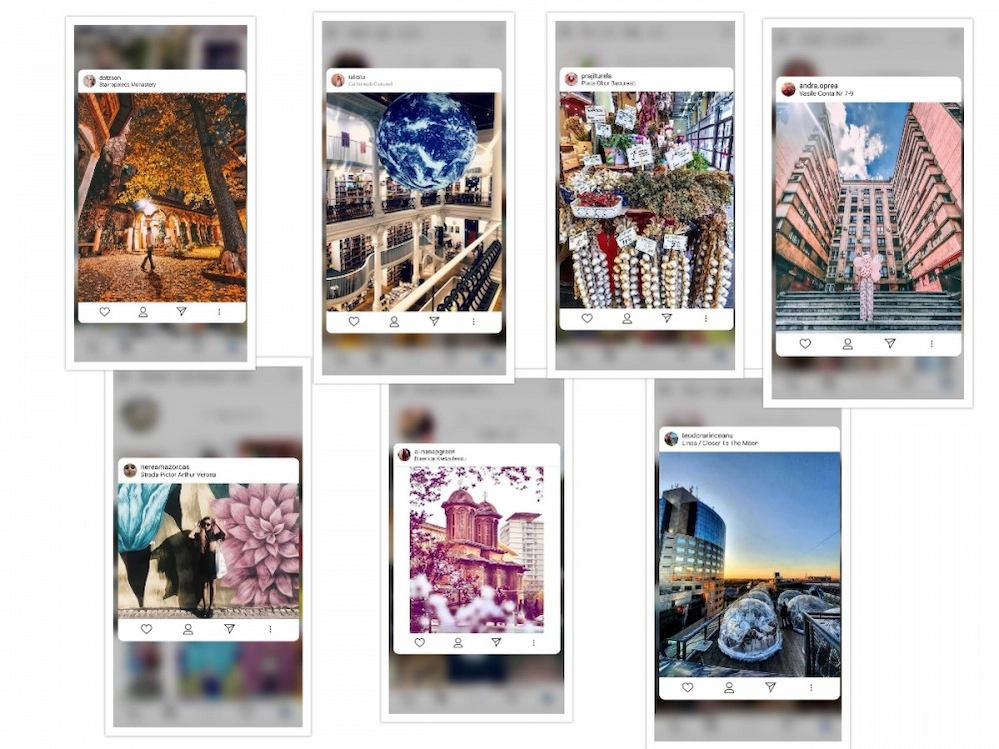Things to do in Bucharest
Travel tipsDo you know that feeling when you visit a new city and want to discover it all, street by street? That's the thrill many feel when they first set foot in Bucharest, Romania. The capital of Romania, Bucharest, has a rich tapestry of historical buildings, day trips from Bucharest, and a buzzing nightlife worthy of the title "Little Paris".
Bucharest's history starts with a curse: the city's name appears for the first time in a medieval document dated during Vlad the Impaler reign, a prince who would later inspire Dracula's Castle legends. The prince was angry because the inhabitants refused to give him support during the attacks against the Turks. However, today, when you visit Bucharest and its bustling Piata Unirii or explore the capital’s street art, the past seems a distant memory.
Table of contents
Relax in one of Bucharest's Park
Wander one of the largest building in the world
Admire the Little Paris style buildings
Take pictures in the best Instagrammable places
Walkthrough an amazing passage
Take a break in a beautiful bookstore
The Romanian capital is a blend of different architectural styles, ranging from old orthodox churches to communist regime relics. While major cities around Bucharest have their charm, Bucharest tourism stands out with its distinctive mix of history and modernity. There are countless things to do in Bucharest, a city full of diverse attractions that can charm any traveller. Enjoy an energetic nightlife, vast shopping areas, rich history, impressive landmarks, and much more.
For those landing at Bucharest airport, there are plenty of airport transfer options that can take you on private tours of the city's highlights.
1. Relax in one of Bucharest's Park
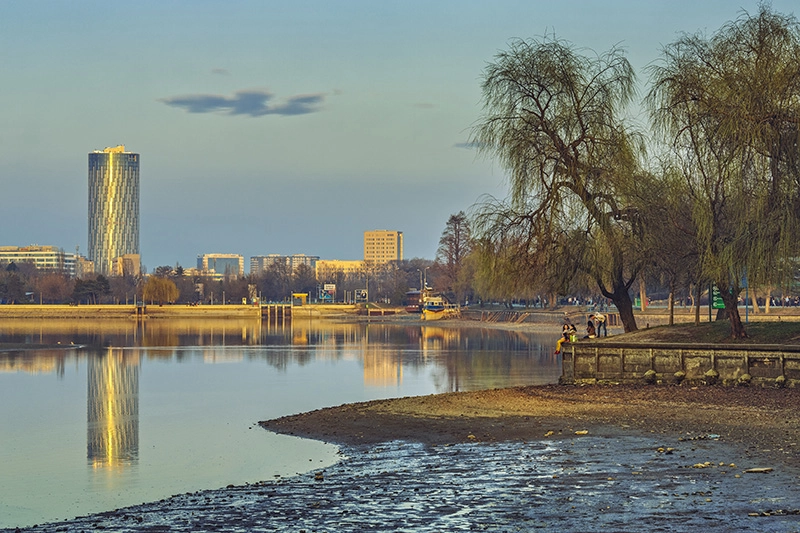
Herastrau Park
If you're looking for an evening of relaxation, Bucharest has some great parks that are perfect just for that.
The Cismigiu Park (also known as The Cismigiu Gardens) is situated near Bucharest's centre, and it is a famous monument for Bucharest. It is the largest park in the city's central area, and it spans around an artificial lake where you can take a boat ride and see the dozens of ducks and swans swimming in the lake.
Another beautiful park is Herastrau, the largest park in the capital, and it is a must-do objective on your things to do on the Bucharest list. Restaurants and cafes surround Herastrau Park. The city is home to several outdoor events and activities, such as jazz concerts and movie nights. Herastrau Park has a lake just like the Cismigiu Gardens, where you can take a boat ride, or you can choose a small sail, a hydro-bike, a canoe, or even try some water sports.
2. Wander the halls of Palace of Parliament
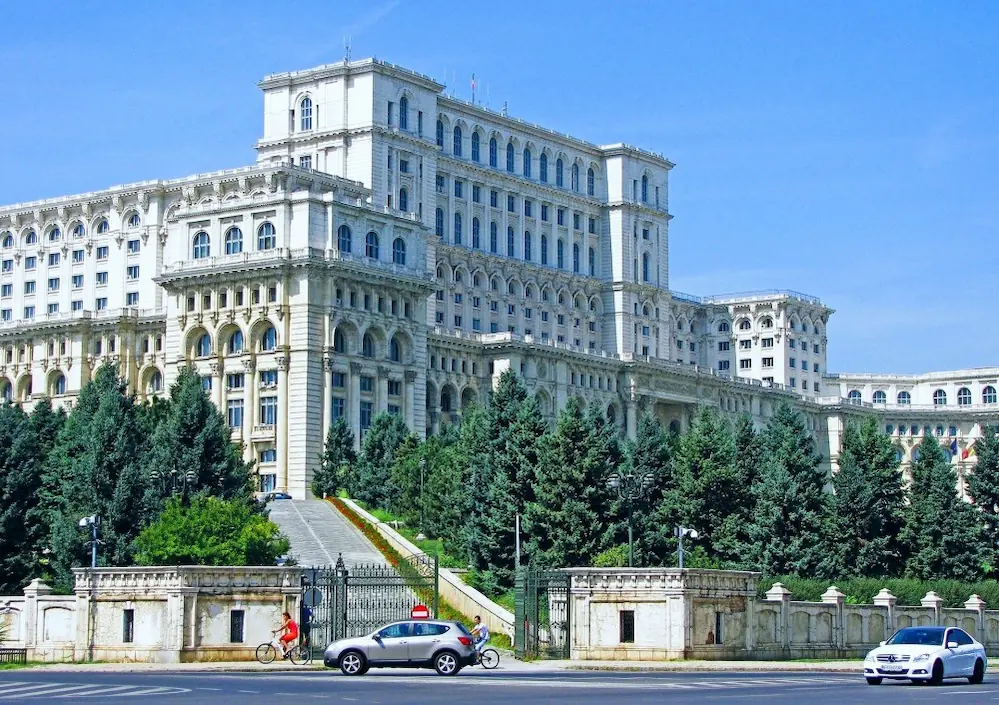
Palace of Parliament
A walking tour of Bucharest might start at the Palace of Parliament, often considered a testimony to the communist party's excesses during its reign. The heaviest building in the world, this architectural marvel is near Piata Universitatii, another key Bucharest tourist attraction.
If you haven't got lost yet inside the largest administrative and heaviest building in the world, now is the time! We want to add that you can do this only in Bucharest, and it is included in the top tourist attractions and should be on your list of things to do in Romania. With a length of 240 meters, a width of 270 meters, and a height of 84 meters, it is the second-largest building in the world after the Pentagon. Even if you can't get into all the 1100 rooms of the building, you will surely find many intrigues about the role of those chambers.
Also, you will find out how this megalomaniac project was developed. We dare you to discover the districts of Bucharest where all the existing buildings were demolished and how tens of thousands of people were involved in completing the construction.
Basically, imagine the Palace of Parliament as the imprint of the personality cult developed by Nicolae Ceausescu. This is also one of the main reasons why it has now become the most expensive administrative building in the world.
3. Visit a museum
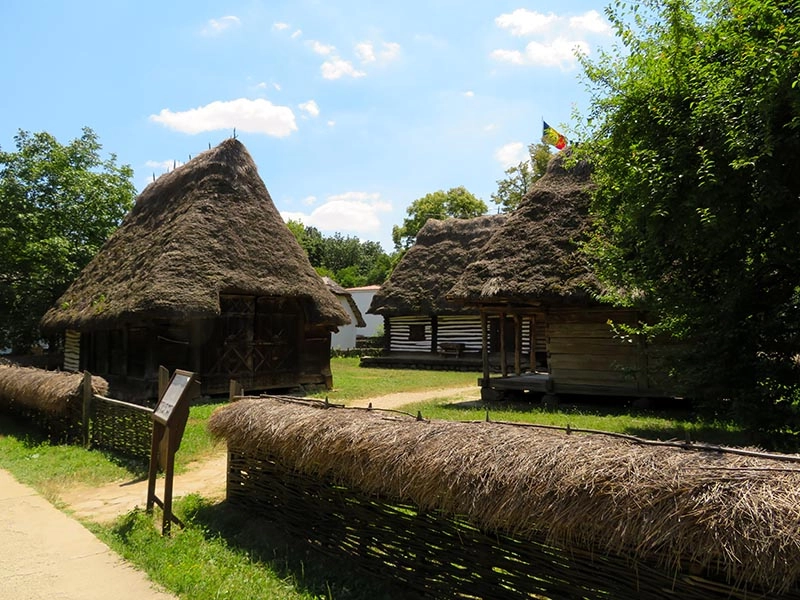
The Dimitrie Gusti National Village Museum
If you have the chance to visit Bucharest, then you need to check out the houses with reed roofs and whitewashed walls from the Delta of the Danube, wooden churches from Maramures, or reconstructed watermills animated by many folk arts and crafts. This open-air museum creates the atmosphere of the traditional Romanian villages. This way, Bucharest Village Museum creates a gateway in the middle of the city, however far from the urban noise and futuristic buildings, right next to Herastrau Lake. Here, you can feel a return to the quiet rural life of the past, as shown by the representative buildings, monuments, and artefacts from the most significant ethnographic areas in Romania.
Beyond the concrete jungle, Bucharest offers serene spots like Herastrau Park, near which you can find the Dimitrie Gusti National Village Museum. It showcases traditional Romanian peasant life with wooden churches and more. And speaking of museums, don't miss the Museum of the Romanian Peasant and the National History Museum.
Another idea of our recommended things to do in Bucharest is to visit "La Bariera," a traditional inn where you can enjoy a traditional Romanian dish, cooked in the countryside cuisine. The inn has its origins in Valenii de Munte, a region that connects Prahova Valley with Buzau Valley and dates back to the 19th century.
Therefore, if you wish to visit Bucharest and the National Village Museum, you can do it easily by yourself, as it is easy to reach, and has good links with Victoriei Square, Unirii Square, or Gara de Nord (the main train station).
The Museum of Art collections (Muzeul Colectiilor de Arta) include the collections donated by old families and at one time count over 12000 pieces. Inside the exposition can be admired by some international artists like Pissaro, Antoine Bourdelle, Gustave Courbet, Van Gogh Gogh, and paintings of Romania's greatest artists, including Nicolae Grigorescu, Theodor Pallady, Lucian Grigorescu, Theodor Aman, Nicolae Tonitza, and Camil Ressu.
National History Museum (Muzeul National de Istorie a Romaniei) -here can be found the largest collection of historical artifacts in Romania, even though the building is still under restoration. We recommend a visit to the National Treasury collection where can admire unique exhibits made of rare metals or stones belonging to the ancient civilization that lived on Romania territory.
Contemporary Art Museum is more of a museum in progress where the collections are in permanent dynamic. The museum can be found in a new wing of the Palace of the Parliament.
Bucharest tourism also features the George Enescu Museum pays tribute to Romania's most famous composer. Another highlight includes the Arcul de Triumf (Arch of Triumph), situated north of Bucharest, standing majestically as a symbol of national pride. And for those interested in the darker side of Bucharest's past, a tour from Bucharest to remnants of the communist era is a sobering experience.
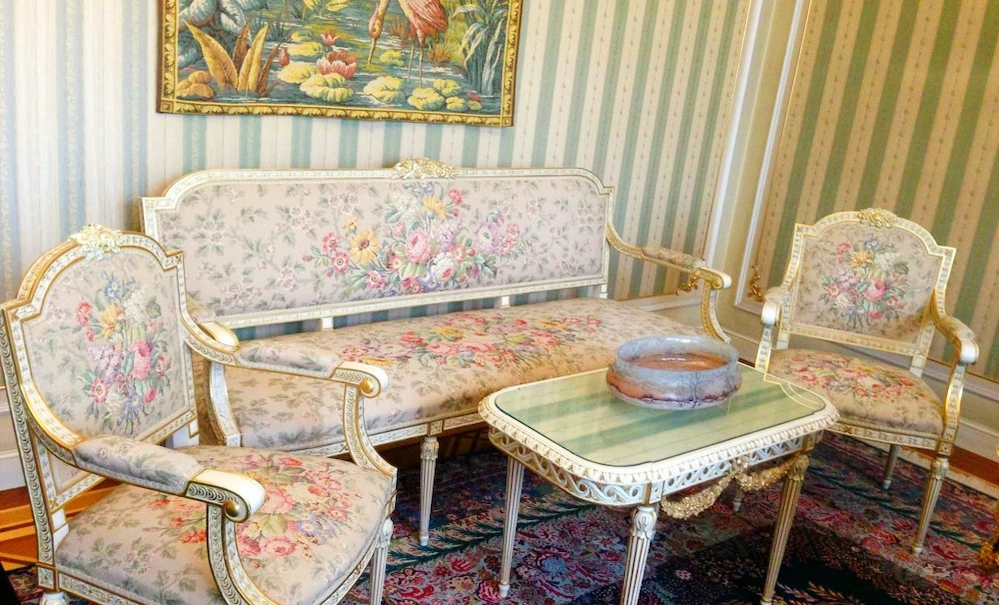
Spring Palace (Ceausescu Mansion)
Now that we already suggested a visit to one of the most megalomaniac projects in the world, a communist tour would be more effective in discovering what communism meant in Romania and how Bucharest as a city was visibly marked. Even though Europe's last dictator, Nicolae Ceausescu, was taken down from power 30 years ago, the traces of the communist Bucharest are still clearly visible throughout the city.
A Bucharest communist tour will take you through the most striking remnants of the heyday of Romanian communism and help you see new details about life from our recent history. You will visit neighbourhoods that were built for the working class, discover the grandeur of the Palace of the Parliament, and take a tour of the Spring Palace, the place where the Ceausescu family lived their luxurious life.
This kind of tour takes around 7 hours, and you will get the chance to learn more about the Ceausescu family while discovering a different side of Bucharest.
5. Admire the Little Paris-style buildings on Victoriei Avenue
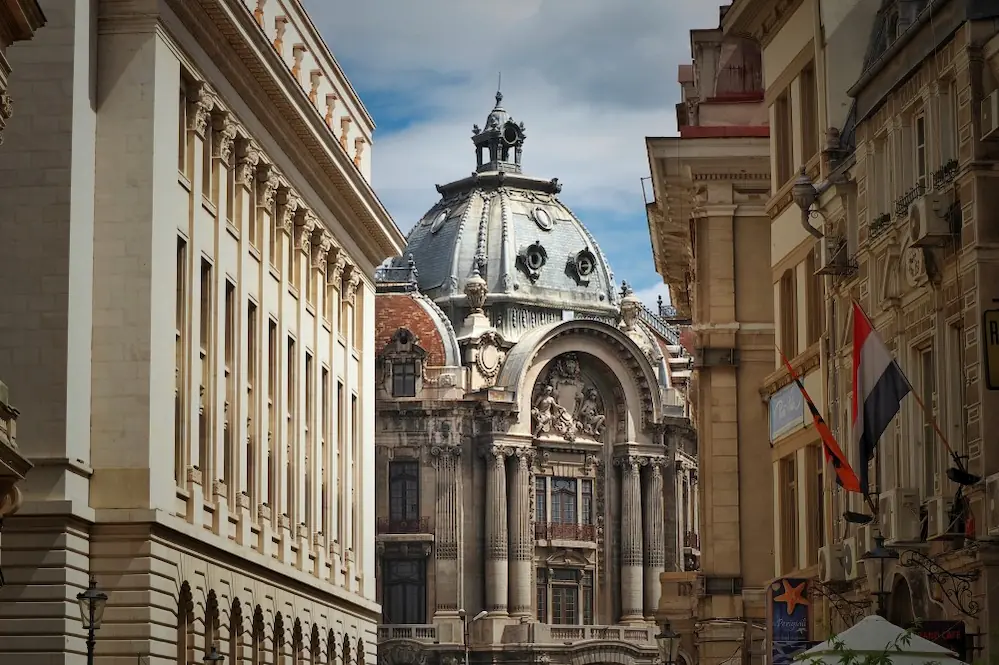
CEC Palace, view from Smardan Street
Visit Bucharest and discover the influence of French culture on the city, particularly during the 19th century when young nobles studying in Paris brought back new cultural norms. This led to the French language becoming a cultural standard in Bucharest. Initially, it was the language of intellectuals, but it soon spread to the middle-class population as well.
This current also influenced architecture. Starting with the first half of the 19th century until the interwar period, more and more impressive buildings in style, such as Neoclassical or French baroque, began to be erected. Victoriei Avenue always had a charm from this point of view. You can admire the Romanian Athenaeum, the National University Library, or the CEC Palace.
But that's not all! We strongly suggest a visit to the National Museum of Art located inside the Royal Palace and to enjoy a Romanian craft beer at Fabrica de Bere Buna brewery. Moreover, the National Museum of Romanian History is located only two steps away, so why not take a look there too? Who knows what you will discover?
Bucharest tourism highlights how this influence is still evident today, with the French language once frequently heard in the city centre's cafes and restaurants. Among the many things to do in Bucharest, experiencing this unique blend of cultures is a must.
6. Take pictures in the best Instagrammable places
Stavropoleos Monastery, Carturesti, Obor Market, Vasile Conta 7-9 Street, Arthur Verona Street, Kretzulescu Church, Linea - Closer To The Moon
Instagram is perhaps the most popular social media channel among travellers. With a little imagination and a suitable filter, you can create a virtual postcard from your picture. The most popular and appreciated pictures are those full of dynamism, authenticity, and colours. Since Bucharest is a city with particularly bohemian chaos, we thought of proposing some Instagram-worthy places to take such pictures.
-
Linea/ Closer To The Moon Restaurant - take the best sunset photography in a special atmosphere while sipping your drink. Bellu Cemetery it's a hidden gem of Bucharest with hundreds of funeral monuments in different shapes and colours.
-
Kretzulescu Church - It is a stain of colour in a unique architectural style, which will make your photography one of the most appreciated on the internet.
-
Arthur Verona Street - You should get here to take a picture of the beautiful and colourful mural paintings.
-
Vasile Conta 7-9 Street - Everyone in the virtual world knows the photos taken at the ground level with the astounding blocks of flats in Hong Kong. We also have something similar, so note the name of the street.
-
Obor Market - local markets are always a rich source of inspiration for street photography lovers. Meet the locals, try some fresh vegetables, and impress your page followers with another authentic experience!
-
Carturesti Carusel - Most of the people come here for the oasis of peace that the place offers and for books, of course. But it would be a pity, in addition, to not take a picture full of shapes and colours.
-
Stavropoleos Monastery - with its small inner courtyard, and its oriental-inspired arches, it is considered by many bloggers and influencers to be perhaps the most instagrammable place in Bucharest.
7. Walkthrough the Macca Villacrosse Passage
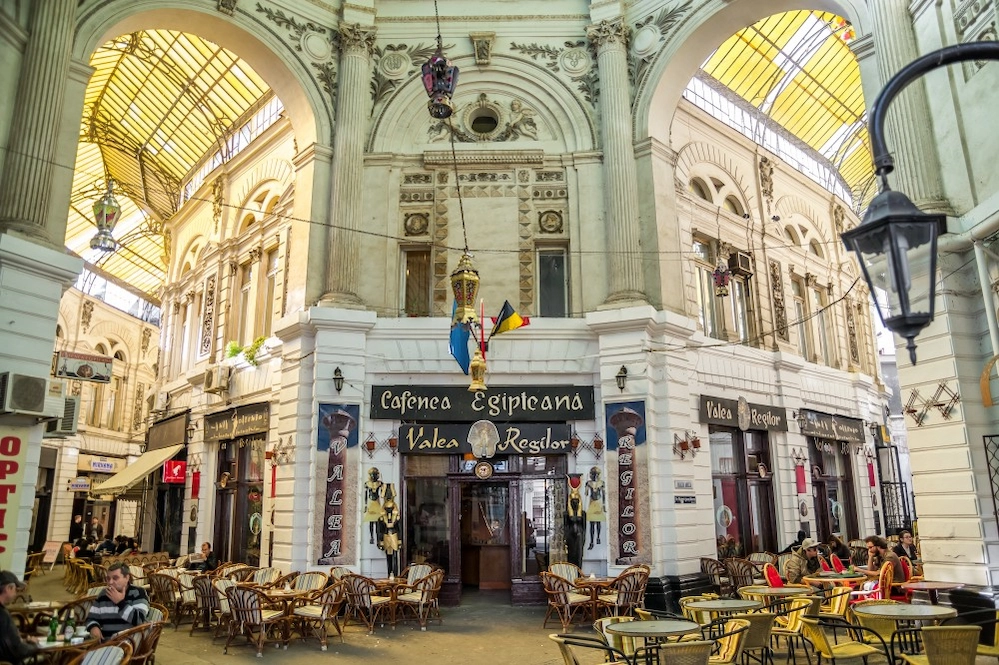
Macca Villacrosse Passage
If you love taking photos, you should try "getting lost" in this place to capture its uniqueness. This passage looks similar to Galleria Vittorio Emanuele. It still retains the flavour of the interwar period, being one of the most beautiful gateways to the city's history.
Tip: Currently, the passage hosts several restaurants, including an Egyptian-themed one, tailoring workshops, a wine bar, stores, and much more. Make sure to add it on your list of things to do in Bucharest.
8. Take a break and read a book about Romania at Carturesti Carusel
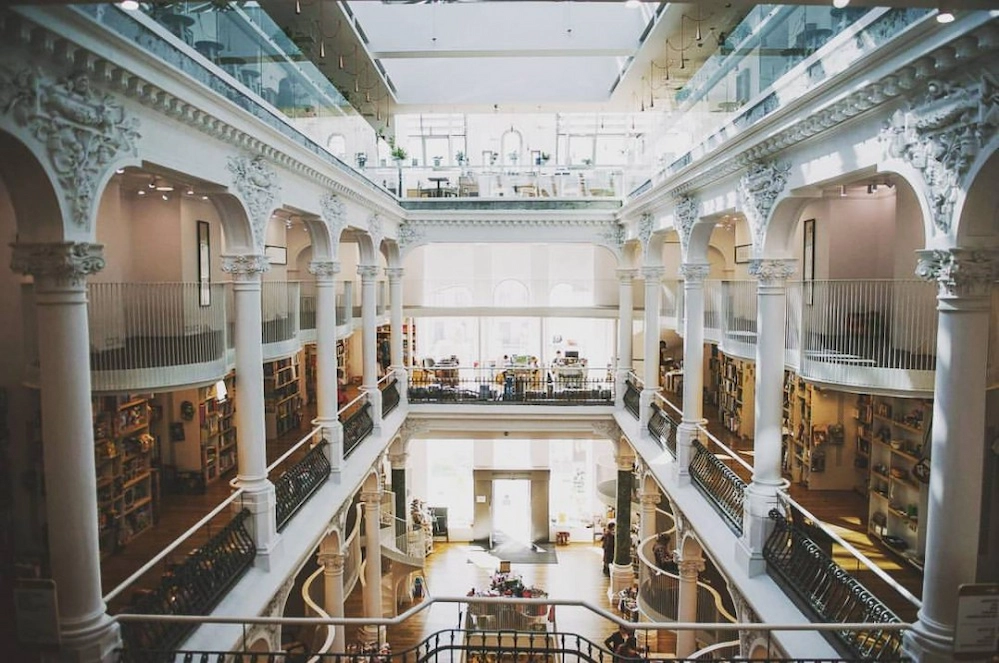
Carturesti Carusel, photo source: https://interestingtimes.ro
If you're looking for a souvenir from your trip to Bucharest, Carturesti Carusel, a bookstore built within a historic building, is the place to go.
The French-style building dates from the 19th century and is impressive with its modern interior design, but it is in balance with the historical past. The house was the headquarters of an important interwar bank. The family that ran the business was pretty close to the Romanian royal family of that time.
Bucharest tourism guides recommend getting lost in the streets of the old center and then relaxing at Carturesti Carusel. Here, you can read a book about Romania, Bucharest, or the places you’ve explored while enjoying a good tea. Among the many things to do in Bucharest, a visit to this unique bookstore is a must.
9. Attend a concert of the Philharmonic at The Romanian Athenaeum

Romanian Athenaeum
Romanian Athenaeum's fame was brought by the fact that a party of the funds for raising it was obtained by public subscription.
If you choose to visit Bucharest, we recommend you listen to a concert of the Philharmonic and admire the impressive fresco in the concert hall. This includes 25 representative scenes from the history of Romania. It can briefly introduce you to Romanian history.
10. Enjoy the local food and a folk show in Bucharest's Old Town

Bucharest Old Town
As long as you are in Bucharest, you can't miss the opportunity to try some tasty local food. And where can you do this if not in a traditional restaurant?
For lunch, we suggest Hanul Lui Manuc (Manuc's Inn). Besides the traditional dishes, the place has a rich history behind it and a typical eastern auberge atmosphere. You will feel like an old merchant from the east, quenching his hunger and thirst.
Hungry after all that exploring? Try Romanian food at Caru cu Bere, one of Bucharest's most iconic restaurants. For book lovers, a visit to Carturesti Carusel, one of the world's most beautiful bookstores, is a must. If you're lucky, your trip might coincide with a music festival celebrating the legacy of George Enescu or other Romanian maestros.
For dinner, try Caru' cu Bere restaurant. The delicious dishes and folk show will prove to you that Romanians know how to party. Furthermore, picture that before your arrival here, personalities such as The Rolling Stones, Nicolas Cage, and Demi Moore have passed the threshold of this restaurant.
There are countless things to do in Bucharest, and trying the local cuisine is an essential part of the experience.
Want to know some Amazing facts about Bucharest?
Welcome to the fun, fascinating, and picturesque city of Bucharest, Romania's capital! Buckle up, because Bucharest boasts a surprising amount of intrigue. Let's delve into some amazing facts that will make you want to explore this city even further!
The Palace of the Parliament building is the world’s heaviest
Prepare to be awestruck by the monumental Palace of the Parliament Building, a true testament to the city’s architectural prowess. Also known as the House of the People, this colossal structure holds the distinction of being the heaviest building in the world. It’s also the second-largest administrative building globally, second only to the Pentagon.
As you wander through its halls and chambers, taking in the opulent interiors and sheer magnitude of it all, you will be transported to an era of grandeur and power.
Bucharest earned the nickname “Little Paris”
Between the two World Wars, Bucharest received the endearing nickname "Little Paris." This lovely nickname was bestowed upon the city in recognition of the gorgeous architecture that adorned its streets throughout this time period. Among this architectural magnificence stands Arcul de Triumf (Triumphal Arch), Bucharest's own Arc de Triomphe and a symbol of Romania's hard-fought freedom.
This triumphal arch, built in 1878 to commemorate the occasion, saw the march of triumphant forces and still stands as a tribute to the nation's fortitude.
Bucharest is Bucur´s City, and His Tale is One of Love and Joy
Visit Bucharest and delve into the captivating legends that surround the city's origins, as we reveal the tale of Bucur. According to local lore, a shepherd named Bucur found his heart's delight in a lady named Dambovita, whose name now graces the city's main river.
Bucur's love story is immortalized in the city's name (București), which translates to "the city of joy" or "beautiful city." This poetic history resonates throughout the city, making Bucharest a true embodiment of joy and beauty.
Victory Avenue in Bucharest Was Romania´s First Paved Road
Venture along Victory Avenue (Calea Victoriei), a historic thoroughfare that weaves through Bucharest's heart.
Bucharest tourism highlights this avenue's fascinating history. Did you know that in 1692, Victory Avenue became the first paved road in Romania? While most roads in the Balkans turned muddy and messy during spring and autumn, this important avenue was covered with wood, earning it the name Mogoșoaia Wood-Paved Road. This innovative project made the street one of Bucharest’s most fashionable areas and a source of city pride.
In 1842, the wooden pavement was upgraded to cobblestone, and today, you will find standard asphalt. Victory Avenue made history again in 1845 as the first illuminated street in Bucharest, casting a warm glow over the city's nightscape. The road was renamed Calea Victoriei in October 1878 after Romania’s victory in the Independence War.
Exploring Victory Avenue is one of the many things to do in Bucharest, offering a unique glimpse into the city's rich history and development.
Politehnica Subway Station is Home to Ancient Marine Treasures
Prepare to be astounded as we descend into the depths of the Politehnica Subway Station, where history takes an incredible turn.
As you go across its floors, gaze down... You'll see a beautiful marble pavement with old marine life. This beautiful marble is made up of approximately 80 million-year-old marine fossils, including shells, algae, snails, corals, and kestrels, all encased in limestone.
It's a breathtaking show of nature's craftsmanship that adds another level of amazement to your Bucharest adventure.
Some Unexpected Buildings are Called Palaces
The names of some of Bucharest's most notable buildings reflect the city's predilection for French inspiration. Bucharest's palaces include the Postal Service Palace, Telephone Palace, and CEC Bank Palace. These regal names date back to a period when Bucharest was enamoured with French culture.
Simply put, palaces in France were considered distinguished and important buildings thus the same rationale was used to name buildings in Bucharest!
Visit Bucharest, a city that bridges the gap between history and the present
Bucharest is more than simply Romania's busy metropolis; it's a mesmerising blend of history and modernity. From the majestic exterior of the National Bank, a tribute to the country's financial power, to the murmurs of previous revolutions echoing in Revolution Square, every corner of Bucharest seemed to carry a narrative waiting to be told.
Prepare to embark on public transportation adventures, navigating the city's intricate network with a touch of local flair. Breathe in the fresh air and reconnect with nature during a stroll through Bucharest's verdant parks, offering a welcome respite from the urban buzz.
The charm of Bucharest lies in its seamless blend of old-world romance and the energy of a modern metropolis, offering countless things to do in Bucharest for every type of traveler.
Intrigued by the prospect of exploring Bucharest's captivating blend of history and present-day vibrancy? Contact Rolandia, your gateway to unforgettable Romanian experiences. We offer a variety of tours designed to unveil the hidden gems and captivating narratives that Bucharest has to offer. Let us craft the perfect itinerary for you, ensuring you discover the magic that awaits in Romania's captivating capital city.
